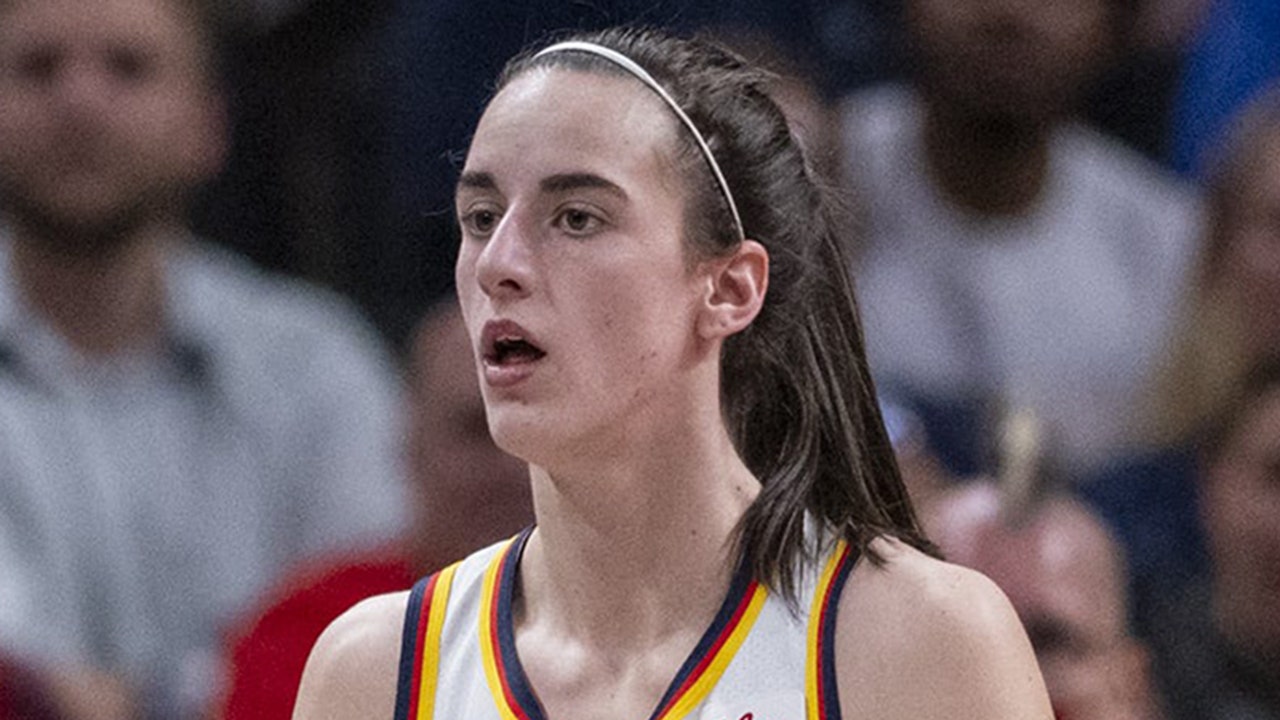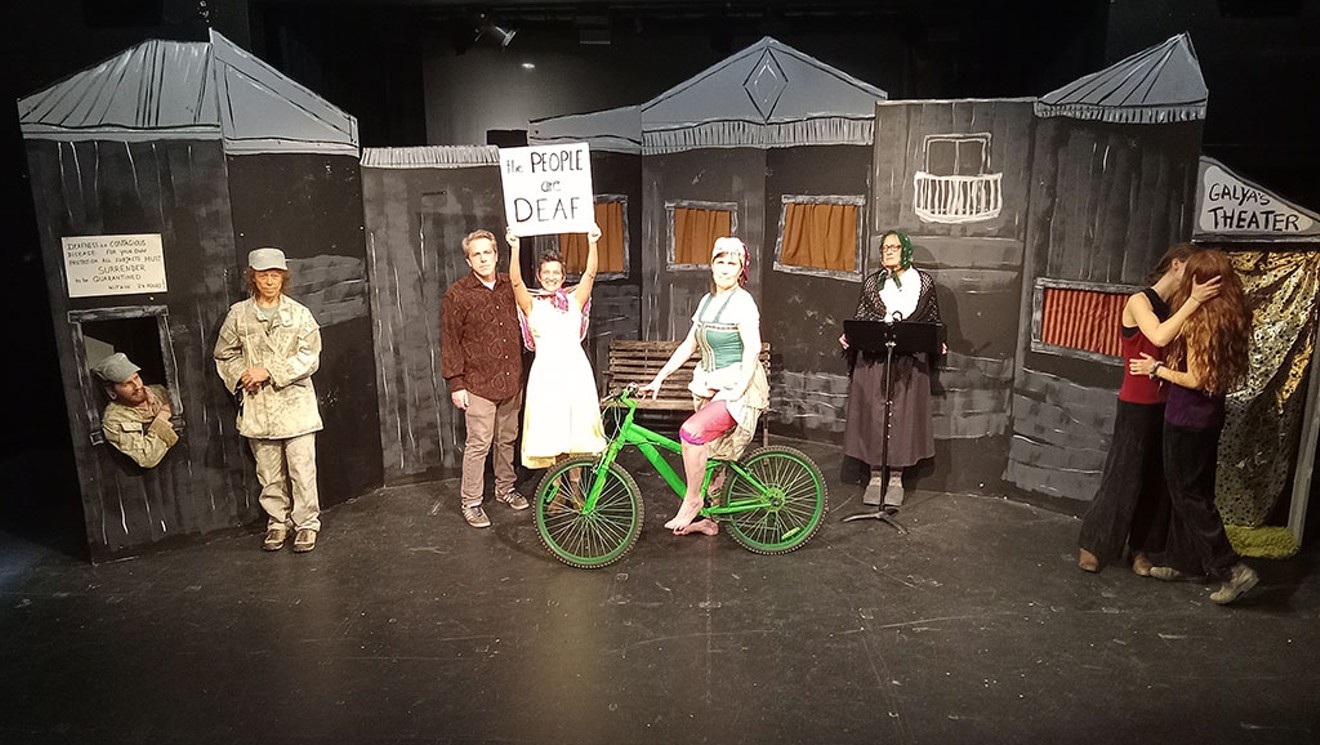Sports
Shaikin: Athletics believe a move to Las Vegas is worth the gamble, will pay off

John Fisher has been thinking a lot about tourists lately.
Las Vegas runs on tourists. Fisher, the owner of the presumptive Las Vegas Athletics, would like to cater to them. He has pondered whether his A’s should start home games at 4 p.m., the better for tourists to catch a game in the afternoon and a show at night.
The legislation proposed to lure Fisher’s team from Oakland to Las Vegas runs 44 pages. The bill does not mention the A’s. The title of the bill: “The Southern Nevada Tourism Innovation Act.”
The public-private partnership proposed between the A’s and Nevada, in which the team would get hundreds of millions of dollars in taxpayer subsidies toward a new stadium, does not involve much in the way of public input.
The bill was introduced on the Friday night of Memorial Day weekend, with public comment reserved for a hearing on Memorial Day. Nevada Gov. Joe Lombardo could sign the bill into law within a week or in a special legislative session soon after.
The governor’s chief of staff, Ben Kieckhefer, kicked off Monday’s hearing by declaring in no uncertain terms: “The state general fund will make money on this deal.”
Those are the kinds of comments that make economists roll their eyes, because academic studies epeatedly have shown that states and cities rarely make money on stadium deals. Jeremy Aguero, a Las Vegas-based consultant working with the A’s, bluntly addressed that issue in pitching the A’s deal during the hearing.
“If you build a stadium in most places around the United States,” Aguero said, “it is going to have a negative economic impact.”
Rob Manfred, commissioner of Major League Baseball, must be thrilled. Good luck with expansion.
What makes Las Vegas different from any other market, Aguero said, is the tourist infusion. Las Vegas runs on 40 million tourists per year, and a baseball team could be another marquee attraction on the world-famous Strip.
With tourists come revenue and jobs, but baseball teams do not offer the number of jobs that Aguero and the A’s are pitching.
The A’s have about 200 full-time employees. Perhaps that number would double with the ticket sales and marketing that would surround a move.
The Angels have about 200 concession workers on an average game day, union spokeswoman Maria Hernandez said. Security, parking, ticket operations and other positions outside that union account for more game-day jobs — but not thousands more.
Aguero told me Tuesday that his projection showed the A’s ballpark would result in 5,400 jobs per year in team and stadium operations.
“I don’t know that I necessarily agree with your numbers,” he said.
A rendering released by the Athletics shows the franchise’s proposed new ballpark, featuring a partially retractable roof, at the Tropicana site in Las Vegas.
(Associated Press)
Aguero said the Las Vegas difference revolves around the nongame events, the private parties and corporate events that can fill a stadium when the team is not playing. He said the A’s stadium could have 200 private events per year and said he did not consult with other major league teams about job numbers.
“I think it’s very much an apples to oranges comparison,” he said. “We’re looking at other facilities that we have here in Las Vegas, to get a sense of what it might look like.”
Aguero provided legislators with estimates that 30% of fans would be tourists, including 16% who would not have to come to Las Vegas if not for the opportunity to see a major league game. In a stadium with a proposed capacity of 30,000, that would mean as many as 9,000 tourists per game.
Aguero estimated the NHL’s Golden Knights, whose winter season is much more tourist-friendly, sell 10% to 20% of their tickets to tourists. He said the popular team has instituted restrictions on ticket sales.
He said the baseball attendance estimates were informed by surveys of fans of other American League West teams, and by data from what legislators were told were “comparable Major League Baseball teams.” He told me those comparable teams included the Dodgers, Chicago Cubs, New York Yankees and Boston Red Sox.
“I don’t want to leave you with the impression that we somehow said the A’s are instantly going to be the Yankees or the Dodgers or the Red Sox,” Aguero said.
The Yankees and Dodgers and Red Sox are national brands. The A’s are a punchline, at least this season.
They could flourish in Las Vegas, or they could flounder. Greg Maddux and Bryce Harper stand for a blossoming baseball heritage in a town where even triple-A baseball draws well. But the Golden Knights and Raiders — and the NBA team that awaits on land already secured for an arena — could suck up so many fan and corporate dollars that there might be too few left for the A’s in what still is a small market.
That would make success with tourists an imperative, not a bonus. This likely is Las Vegas’ best chance at a major league team, because expansion would be far more competitive and far more expensive. Still, the hundreds of millions of dollars in public subsidies essentially mean legislators would be gambling with taxpayer money.
A World Series would be worth it. But the Stanley Cup Finals are just as thrilling, and they open Saturday in Las Vegas.
Tweeted Clark County Commissioner Tick Segerblom: “ironic that the best men’s team in las vegas is the one that didn’t receive any public subsidy.”

Sports
Thompson: The Caitlin Clark panic should stop. Trust that the rookie will figure it out

No, this was not the fantastical introduction to the professional ranks for Caitlin Clark. Certainly not the bender of basketball bliss a segment of her legion was hoping to be hungover from at some point this weekend.
But rooks don’t get to jump over stuff.
Her first two games might feel like a letdown, especially Thursday’s epic home opener with the Indiana Fever. The moment was big enough for history to pull up to the venue. Sports’ latest transcendent figure created a buzz in Gainbridge Fieldhouse rivaling the New York Knicks-Indiana Pacers series.
Then the New York Liberty shut down the party, and Breanna Stewart destroyed any delusions that a rookie might be the WNBA’s best player.
But Clark will be fine. Just fine. This is just the first of many hard parts. A great game is coming. More bad ones, too. But it’s necessary. You can’t climb a mountain if it’s smooth.
Sabrina Ionescu talks about Caitlin Clark’s adjustment to the WNBA and hosting her on a visit to Oregon when she was deciding where to go to college
“I just know she’s gonna continue to work really hard and stick with it. Good things will happen to good people.” pic.twitter.com/thI8tDfs4C
— New York Liberty Videos (@SNYLiberty) May 17, 2024
The only question is whether the fans she’s brought to women’s basketball will allow her this. Clark has talked about giving herself grace. If it wasn’t a coded message to her masses, it should be received as such. She probably won’t be deterred by unrealistic expectations propped on her shoulders. But it can make the climb harder. That’s what she wants, though.
All hoopers, real hoopers, share this trait. Those groomed on inner-city blacktops, in sparkling suburban gymnasiums, at specialized academies in Australia, on dirt courts beneath rural skies. Among their commonalities is this universal truth: They embrace what’s hard. They’re motivated by the degree of difficulty. As long as success is possible in the confines of their delusional confidence, hoopers are game for the smoke. Real hoopers. They want a hill to conquer. It’s how they confirm their conviction of greatness.
That’s why Clark will be fine. We already know she is a real hooper. She’s long revealed that essence.
She could be somewhere chilling right now. Cashing in her celebrity, growing her brand before a farewell tour of a season at Iowa. Courtesy of the NCAA’s extra year of eligibility allowance for the pandemic, she could’ve gone back to her comfort zone in college. Yet, she opted for this. To be hounded by a more athletic DiJonai Carrington. To be smothered by a bigger Betnijah Laney-Hamilton. To face traps and double teams and hard fouls. To get her bearings under the weight of her enormous fan base and mercurial fame.
To take her lumps. To risk disappointment.
It might take some time to find her stride, especially because she wants to win more than she wants to dazzle. But she’s not set up to be the same Clark who seized the nation.
First off, the Fever’s schedule is brutal to start. Their next two games are rematches against New York on Saturday and Connecticut on Monday, two teams which Indiana lost to by a combined 57 points. That’s followed by a three-game roadie at Seattle, Los Angeles and defending champion Las Vegas. That’s a far cry from Fairleigh Dickinson, Northern Iowa and Purdue-Fort Wayne to warm up against early in the season.
Plus, Clark is already garnering the peak focus of much better defenders.
Her debut was a dance with Carrington, a 5-foot-11 hound who is in the league to harass ballhandlers (and who is good enough at it she doesn’t mess up her perfect makeup in the process). Clark’s home debut was a date with Laney-Hamilton, a vet in every sense. She played for eight teams in six years, including four overseas, before breaking out with the Liberty in 2021. She’s got at least 15 pounds on Clark and a decade of hard-nose hoops under her belt dating back to her Rutgers days. Another real hooper who was determined to be felt by Clark.
Both were picking her up full court or face-guarding Clark in the half court.
Dijonai Carrington is putting the clamps on Caitlin Clark 🔒 pic.twitter.com/pGQ7MlXIqb
— ESPN (@espn) May 15, 2024
Clark is still learning the offense, which is not centered on her. The Fever play inside out, posting up Aliyah Boston or whoever has the size advantage, looking to draw in the defense for the kick out. It’s not the offense I’d run with Clark as my point guard. But this is part of it, too.
Clark’s record 40.1 percent usage rate in college — meaning she used that percentage of Iowa’s plays — won’t be happening this season. Seattle’s Jewell Loyd led the league last season with a usage rate of 31.5. Clark’s usage rate through two games: 28.7.
Not only are defenses locked in on her, and the Fever’s offense prioritizing post-ups, and the ball not in her hands nearly as much as it was in college, but Clark also has teammates who can do some things, too. And they’ve got room to work as Clark draws attention. So the likes of Erica Wheeler, NaLyssa Smith and Kelsey Mitchell are professional scorers looking to take advantage of space. So the ball doesn’t work its way back to Clark often.
The other expected outcome was Clark’s getting attacked on defense. Stewart’s forcing the switch to get Clark onto her back was a window into the life of a rookie. She’s gotta get better at moving her feet instead of reaching, learn the tendencies of her opponents through film studies to gain some advantages, and — perhaps most importantly — get her strength and conditioning to new levels so having to defend doesn’t take away her legs and energy on offense.
If her legend is to continue in the WNBA, it could take months or even seasons to become a dominant player at this level. However long it takes is how long she needs, and how long she should get. As sensational as she is, it’s unfair to regard Clark as some carnival act going city to city splashing trick shots. That’s beneath her. For sure, those deep bombs release bursts of ecstasy into the air when they splash. It’s easy to want repeated hits of such a sensation.
But this is a real hooper on a journey to basketball excellence. This is a career, one that might carve her name among the all-time greats if it goes well. That’s worth having a proverbial seat and enjoying the whole process. Because if she gets there, it will be because of the struggles along the way.
With her basketball IQ, Clark likely knew this was coming. It’s a true gantlet. Like it should be. A certain portion of her legion, inebriated by Clark’s captivating style of play, expected the pros to be a continuation of her Hawkeye brilliance, as if the WNBA was some kind of lateral move. As if her meager salary was representative of the league’s ballers and not its business.
GO DEEPER
How does Caitlin Clark’s WNBA salary measure up in sports? An analysis shows big gaps
But anyone who watches the WNBA could’ve anticipated early struggles for Clark. WNBA OGs tried to warn, even if some mixed a little hateration in their holleation. But they knew.
It’s a safe bet she’s never come off a screen into a trap with someone as tough as Connecticut’s Alyssa Thomas, or been hunted on defense by a scorer the likes of Stewart. Even if Clark is about this life, it requires adjusting.
Sabrina Ionescu, one of the league’s biggest stars, went 4-of-17 in her 2020 debut. She wasn’t on Clark’s level, but she was a massive star at Oregon. Her first game, with the Liberty, was a major deal. She got smoked by Seattle, missing all eight of her 3s with 4 turnovers in a loss.
Ionescu put up 33 points the next game. But in her third game, a Grade 3 ankle sprain ended her season. She still managed to become an All-Star and is one of the game’s best guards. Real hoopers bounce back, though. Ionescu did. Clark will.
She will shoot it at better than a 30.4 percent clip. She’s missing a lot of open shots and defending many others. She just needs to find her rhythm. And her stellar passing ability means she can have an impact on the game in multiple ways. She’s got good size at 6 feet, high IQ and a love of the craft that will keep her working. She will figure it out. Can you wait long enough until she does? Can you appreciate this part as much as the turn-up to come?
It just takes time. It takes the hard lessons of bad games and tough losses. It takes film study. It takes losing accompanied by a hatred for losing. It takes this part.
And the grace to let her go through it.
(Photo: Dylan Buell / Getty Images)
Sports
Caitlin Clark’s expletive-filled outburst leads to 1st career technical foul as Fever remain winless

Caitlin Clark is known for her fire and emotion on the basketball court, but instead of that leading to her first career win with the Indiana Fever, she received her first career technical foul instead.
The Fever remain winless on the year, falling to the Connecticut Sun for the second time already, 88-84, but this one came down to the wire when every possession counted.
However, Clark’s temper flared with 3:41 left in the fourth quarter with the Fever up one point, as she appeared to curse in the direction of a referee, leading to an immediate whistle and a technical foul called on her.
Indiana Fever guard Caitlin Clark, #22, reacts after scoring a 3-point basket during the second half of an WNBA basketball game against the Connecticut Sun on Monday, May 20, 2024 at Gainbridge Fieldhouse. (IMAGN)
“It’s a f—ing foul,” Clark appeared to bark at one of the officials after she was called for a transition take foul following a turnover, which the Sun’s Alyssa Thomas caused on the other end of the floor.
Clark felt she got fouled by Thomas prior to her steal, and then the transition take foul did not help how she felt when she attempted to slow down Connecticut on the other end.
The technical foul led to one free throw for the Sun, which DeWanna Bonner made to tie the game. It was also the last time the Fever held the lead in this one.
CAITLIN CLARK’S ‘PROBLEMATIC’ POPULARITY COMES FROM ‘RACE AND HER SEXUALITY’: FORMER ESPN HOST
A back-and-forth battle on the scoreboard ultimately ensued, with the Fever tying things up with 30 seconds to play thanks to Clark finding Aliyah Boston, who made a seven-foot jumper to knot things at 84 apiece.
However, Indiana’s Temi Fagbenle was called for a personal foul on Tyasha Harris with 11.1 left on the clock, leading to two free throws. Harris would drain both of them, giving Connecticut the two-point lead over Indiana.

Connecticut Sun forward Alyssa Thomas, #25, knocks the ball away from Indiana Fever guard Caitlin Clark, #22, during the second half of an WNBA basketball game on Monday, May 20, 2024, at Gainbridge Fieldhouse. (IMAGN)
On the other end, Boston could not make a driving layup with 7.1 left in the game, and Thomas buried two more free throws to ice the victory for the Sun.
Clark would finish the game with 17 points, which was tied with Kelsey Mitchell for the team lead in that category. Clark shot 5-of-11 from the field, including 3-of-7 from beyond the arc, with five assists, three rebounds and two blocks as well.
After the game, Clark knows she should not have reacted the way she did, leading to the technical.
“Just the technical foul, can’t get that,” Clark told reporters. “A little frustration of how the game was reffed. But it is what it is. That’s out of your control. I thought our team put ourselves in position to make some plays to try and win down the stretch and the Sun always came up with big plays.”
Earlier in the game, Clark injured her ankle, which certainly gave the Fever and its fans a big scare. However, she would return to the game after needing to come out in the second quarter.

Indiana Fever guard Caitlin Clark, #22, reacts after being called for a foul during the second half of an WNBA basketball game against the Connecticut Sun on Monday, May 20, 2024 at Gainbridge Fieldhouse. (IMAGN)
Clark and the Fever have not gotten off on the right foot to start the season. They will get another chance to notch that first win on Wednesday, when they head to Seattle to face the Storm.
Follow Fox News Digital’s sports coverage on X, and subscribe to the Fox News Sports Huddle newsletter.
Sports
LAFC is trying to find the winning blend of youth and aging stars

Seven seasons after its MLS debut, LAFC is beginning to show its age.
A team built around young, dynamic South Americans, including Brian Rodríguez, Diego Rossi, Diego Palacios, Francisco Ginella and José Cifuentes, had the youngest starting lineup in the league in 2020. It was a relatively new approach to roster building in a league that had long been mocked as a retirement home for big-name European stars.
And it was wildly successful, with LAFC winning two Supporters’ Shields and reaching two MLS Cup finals and two CONCACAF Champions League finals in six years.
Those five South Americans are all gone, sold for nearly $13 million in transfer fees, and this year’s LAFC roster is the 26th-oldest in the 29-team league. It will grow even older in July when Olivier Giroud, a World Cup champion with France, joins the team on a designated player contract 10 weeks shy of his 38th birthday.
Yet for general manager John Thorrington, the maturing of the team isn’t so much a change of strategy as it is a seizing of opportunities.
“[It’s] adapting to the current climate,” said Thorrington, who certainly knows what he’s doing since he’s the most successful general manager in MLS since 2018.
Changes in MLS budget rules, such as the U-22 initiative, and increases in targeted allocation money have given Thorrington the freedom to spend in different ways. So when Giorgio Chiellini, the 38-year-old captain of the Italian national team, and Gareth Bale, the 32-year-old Welsh captain, became available midway through the 2022 season, LAFC signed both.
Five months later it won an MLS Cup.
Both players have since retired, replaced on this season’s roster by Hugo Lloris, 37, the former captain of the French national team whose 20 World Cup appearances are the most ever by a goalkeeper. Lloris signed for $350,000, less than what 25 MLS keepers will earn this season, a bargain Thorrington said he couldn’t pass up.
Unlike Lloris, Giroud isn’t coming cheap, receiving a designated-player contract that runs through 2025, with an option for 2026. He was reportedly paid $4.76 million in his final season in Milan. Yet unlike Lloris, who didn’t play in his final seven months at Tottenham, Giroud is at the top of his game, with his 14 goals for AC Milan tied for fourth in Italy’s Serie A with a game to play.
“It’s not as though we have abandoned this idea that we are going to invest in young talent that will help us win here and then sell them. That’s a part of what we’ve always done,” said Thorrington, whose team is 6-4-3, good for fifth in the MLS Western Conference standings heading into Tuesday’s U.S. Open Cup round-of-16 match against Loudoun United. “Are you a player-development club or are you going for championships? We don’t see those as mutually exclusive concepts. We are both.”
LAFC’s roster is indeed a mix of young and old. Eight players are under the age of 23, among them teenager David Martínez, the sixth-youngest player to appear in an MLS game this season. Giroud’s arrival after this summer’s European Championship, will give LAFC eight players over 31, among them 39-year-old striker Kei Kamara, the league’s oldest player.
Thorrington is especially high on Martínez, a Venezuelan forward three months past his 18th birthday, while 22-year-old forwards Mateusz Bogusz and Cristian Olivera are tied for second on the team in scoring with four goals each.
As for established players such as Chiellini, Bale, Lloris and Giroud choosing to end their careers with LAFC, Thorrington said that’s a product of the young team’s success, something the team had to build before it could be exploited.
“At the beginning we were a concept,” he said. “Now that people see and feel what LAFC is, those opportunities from top players in Europe with interest in coming here have certainly increased. For us, signing players at economic terms that make sense for us to help us achieve our objectives of winning and also help our young players develop by showing them the right example and what it means to be a pro, that still fits well within our strategic aims as a club.”
When that door opens, more than one player can walk through. Consider that the Arizona-based Elite Athletes Agency, whose founder Jerome Meary was in the social media photo that announced Giroud’s signing last week, also has ties to several European-born players, among them Lloris, Denis Bouanga, Stipe Biuk, Filip Krastev and Maxime Chanot, all of whom have played for LAFC.
Four of those players — Giroud, Bouanga, Lloris and Chanot — were born in France. Lloris, the French national team leader in caps, and Giroud, the team’s all-time leader in goals, played together in the last two World Cup finals, winning the title in 2018. Certainly they all spoke to one another before they wound up together in L.A.
That has fueled rumors another Frenchman, Antoine Griezmann, could be in LAFC’s future. Griezmann, 33, is under contract with Atlético Madrid through 2026 but has long expressed a desire to finish his career in MLS.
Part of that desire was to reunite with former Real Sociedad teammate Carlos Vela, who hasn’t played anywhere since his contract with LAFC expired in December. And that raises a question: If LAFC has money and a roster spot to wager on a soon-to-be-38 Giroud, who is a great player but an unknown quality in MLS, why doesn’t it have the same for Vela, 35, a former league MVP, the single-season scoring leader and the team’s captain through its first six seasons?
Thorrington said he has had discussions with Vela’s agent, but the talks have so far been fruitless.
“It’s been a bit of a frustrating process trying to find a match between what we could afford to do and what we felt like we needed as a club on the field,” he said. “We, unfortunately, have not been able to find that balance with Carlos.”
When it comes to mixing young players with old, however, LAFC has gotten that balance just right.
-

 News1 week ago
News1 week agoSkeletal remains found almost 40 years ago identified as woman who disappeared in 1968
-

 Movie Reviews1 week ago
Movie Reviews1 week ago“Kingdom of the Planet of the Apes”: Disney's New Kingdom is Far From Magical (Movie Review)
-

 World1 week ago
World1 week agoIndia Lok Sabha election 2024 Phase 4: Who votes and what’s at stake?
-

 World1 week ago
World1 week agoUkraine’s military chief admits ‘difficult situation’ in Kharkiv region
-

 World1 week ago
World1 week agoCatalans vote in crucial regional election for the separatist movement
-

 Politics1 week ago
Politics1 week agoNorth Dakota gov, former presidential candidate Doug Burgum front and center at Trump New Jersey rally
-

 Movie Reviews1 week ago
Movie Reviews1 week agoAavesham Movie Review
-

 News1 week ago
News1 week agoTrump, Reciting Songs And Praising Cannibals, Draws Yawns And Raises Eyebrows














